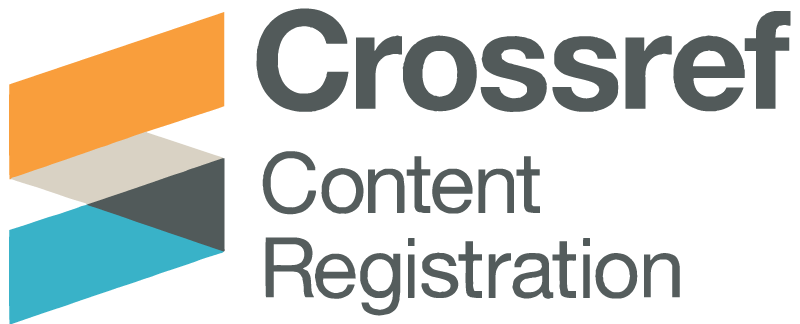قياس اداء سلسلة التوريد الغذائي في المنظمات الصناعية الليبية باستخدام بطاقة الاداء المتوازن
DOI:
https://doi.org/10.59743/aujas.v6i5.1510الكلمات المفتاحية:
بطاقة الاداء المتوازن، سلسلة التوريد الغذائي، قياس الاداء، مؤشرات الاداءالملخص
الورقة الحالية تحدد أهم مؤشرات الأداء الرئيسية لقياس أداء سلسلة التوريد الغذائي في ليبيا باستخدام بطاقة الأداء المتوازن. حيث تم إجراء تحليل نوعي بالتعاون مع خبراء في سلسلة الإمداد الغذائي من خلال مقابلات عقدت مع مسؤولين في المنظمات الصناعات الغذائية الليبية. وبهذا الصدد تم تجميع (20) مؤشر اداء لكل محور من محاور بطاقة الاداء المتوازن بحيث تم الحصول على 80 مؤشر للمحاور الاربعة المختلفة من بطاقة الاداء المتوازن ،هذه المؤشرات تم الحصول عليها وتجميعها من خلال دراسة الدراسات والبحوث السابقة المتعلقة بسلسلة التوريد الغذائي, حيث تم إعداد استبيان وتوزيعه على (125) شخصاً يعملون في المستويات الخمسة لسلسلة التوريد, (25) فردًا لكل مستوى وهم الموردين (S) والمصنعين (M) وتجار الجملة (W) وتجار التجزئة (R) والعملاء او الزبائن (C). تم تحليل الاستبيان ، وسلطت النتائج الضوء على قائمة مختصرة تشتمل فقط على عدد من مؤشرات الاداء كالاتي : (7) من المؤشر المالي، (5) من مؤشر الزبائن ، (7) من مؤشر العمليات الداخلية، (4) من مؤشر التعليم والنمو وبالتالي تم إنشاء نموذج عام لبطاقة الاداء المتوازن يمكن استخدامه لقياس الاداء في أي مرحلة من مراحل سلسلة التوريد الغذائي. ولقد تمت الموافقة على النموذج المقترح من قبل الخبراء الصناعيين , كما انه يمكن ايضا بهذا النموذج قياس معايير اخرى مثل الموثوقية والاستجابة وادارة المخاطر وسلامة المنتج وادارة الاصول , كذلك التكلفة والربح ايضا الوقت والتنمية المستدامة
التنزيلات
المراجع
Wong, W. P. (2009). Performance evaluation of supply chain in stochastic environment: Using a simulation based DEA framework. International Journal of Business Performance and Supply Chain Modelling, 1(2–3), 203–228. https://doi.org/10.1504/IJBPSCM.2009.030642 DOI: https://doi.org/10.1504/IJBPSCM.2009.030642
Lambert, D. M., & Pohlen, T. L. (2001). Supply Chain Metrics. The International Journal of Logistics Management, 12(1), 1–19. https://doi.org/10.1108/09574090110806190 DOI: https://doi.org/10.1108/09574090110806190
Cai, J., Liu, X., Xiao, Z., & Liu, J. (2009). Improving supply chain performance management: A systematic approach to analyzing iterative KPI accomplishment. Decision Support Systems, 46(2), 512–521. https://doi.org/10.1016/j.dss.2008.09.004 DOI: https://doi.org/10.1016/j.dss.2008.09.004
Sharma, J., Tyagi, M., & Bhardwaj, A. (2020). Parametric review of food supply chain performance implications under different aspects. Journal of Advances in Management Research, 17(3), 421–453. https://doi.org/10.1108/JAMR-10-2019-0193 DOI: https://doi.org/10.1108/JAMR-10-2019-0193
Yontar, E., & Süleyman, E. (2020). Investigation of food supply chain sustainability performance for Turkey’s food sector. Frontiers in Sustainable Food Systems, 4(June), 68. https://doi.org/10.3389/fsufs.2020.00068 DOI: https://doi.org/10.3389/fsufs.2020.00068
Li, S., Ragu-Nathan, B., Ragu-Nathan, T. S., & Subba Rao, S. (2006). The impact of supply chain management practices on competitive advantage and organizational performance. Omega, 34(2), 107–124. https://doi.org/10.1016/j.omega.2004.08.002 DOI: https://doi.org/10.1016/j.omega.2004.08.002
Reddy. K, J. M., Rao. A, N., & L, Krishnanand. (2019). A review on supply chain performance measurement systems. Procedia Manufacturing, 30, 40–47. https://doi.org/10.1016/j.promfg.2019.02.007 DOI: https://doi.org/10.1016/j.promfg.2019.02.007
Mishra, D., Gunasekaran, A., Papadopoulos, T., & Dubey, R. (2018). Supply chain performance measures and metrics: A bibliometric study. Benchmarking: An International Journal, 25(3), 932–967. https://doi.org/10.1108/BIJ-08-2017-0224 DOI: https://doi.org/10.1108/BIJ-08-2017-0224
Mathiyalagan, P., Mannan, K., & Parthiban, P. (2014). Performance evaluation in supply chain using balanced scorecard. International Journal of Advances in Mechanical & Automobile Engineering (IJAMAE), 1(1), 4–10.
Azfar, K. R. W., Khan, N., & Gabriel, H. F. (2014). Performance Measurement: A Conceptual Framework for Supply Chain Practices. Procedia - Social and Behavioral Sciences, 150, 803–812. https://doi.org/10.1016/j.sbspro.2014.09.089 DOI: https://doi.org/10.1016/j.sbspro.2014.09.089
knoema. (2018). Libya Food production index, 1960-2020. Retrieved June 12, 2021, from Knoema website: https://knoema.com//atlas/Libya/Food-production-index
Gunasekaran, A., Patel, C., & Tirtiroglu, E. (2001). Performance measures and metrics in a supply chain environment. International Journal of Operations & Production Management, 21(1/2), 71–87. https://doi.org/10.1108/01443570110358468 DOI: https://doi.org/10.1108/01443570110358468
Gunasekaran, A., Patel, C., & McGaughey, R. E. (2004). A framework for supply chain performance measurement. International Journal of Production Economics, 87(3), 333–347. https://doi.org/10.1016/j.ijpe.2003.08.003 DOI: https://doi.org/10.1016/j.ijpe.2003.08.003
Gaiardelli, P., Saccani, N., & Songini, L. (2007). Performance measurement of the after-sales service network—Evidence from the automotive industry. Computers in Industry, 58(7), 698–708. https://doi.org/10.1016/j.compind.2007.05.008 DOI: https://doi.org/10.1016/j.compind.2007.05.008
Bhagwat, R., & Sharma, M. K. (2007). Performance measurement of supply chain management using the analytical hierarchy process. Production Planning & Control, 18(8), 666–680. https://doi.org/10.1080/09537280701614407 DOI: https://doi.org/10.1080/09537280701614407
Zhou, H., & Benton, W. C. (2007). Supply chain practice and information sharing. Journal of Operations Management, 25(6), 1348–1365. https://doi.org/10.1016/j.jom.2007.01.009 DOI: https://doi.org/10.1016/j.jom.2007.01.009
Maestrini, V., Luzzini, D., Maccarrone, P., & Caniato, F. (2017). Supply chain performance measurement systems: A systematic review and research agenda. International Journal of Production Economics, 183, 299–315. https://doi.org/10.1016/j.ijpe.2016.11.005 DOI: https://doi.org/10.1016/j.ijpe.2016.11.005
Qazi, A., Dickson, A., Quigley, J., & Gaudenzi, B. (2018). Supply chain risk network management: A Bayesian belief network and expected utility based approach for managing supply chain risks. International Journal of Production Economics, 196, 24–42. https://doi.org/10.1016/j.ijpe.2017.11.008 DOI: https://doi.org/10.1016/j.ijpe.2017.11.008
Venkatesh, V. G., Zhang, A., Deakins, E., Luthra, S., & Mangla, S. (2019). A fuzzy AHP-TOPSIS approach to supply partner selection in continuous aid humanitarian supply chains. Annals of Operations Research, 283(1), 1517–1550. https://doi.org/10.1007/s10479-018-2981-1 DOI: https://doi.org/10.1007/s10479-018-2981-1
Kirwan, J., Maye, D., & Brunori, G. (2017). Acknowledging complexity in food supply chains when assessing their performance and sustainability. Journal of Rural Studies, 52, 21–32. https://doi.org/10.1016/j.jrurstud.2017.03.008 DOI: https://doi.org/10.1016/j.jrurstud.2017.03.008
Govindan, K., Mangla, S. K., & Luthra, S. (2017). Prioritising indicators in improving supply chain performance using fuzzy AHP: Insights from the case example of four Indian manufacturing companies. Production Planning & Control, 28(6–8), 552–573. https://doi.org/10.1080/09537287.2017.1309716 DOI: https://doi.org/10.1080/09537287.2017.1309716
Yadav, S., Garg, D., & Luthra, S. (2020). Development of IoT based data-driven agriculture supply chain performance measurement framework. Journal of Enterprise Information Management, 34(1), 292–327. https://doi.org/10.1108/JEIM-11-2019-0369 DOI: https://doi.org/10.1108/JEIM-11-2019-0369
Lin, L.-C., & Li, T.-S. (2010). An integrated framework for supply chain performance measurement using six-sigma metrics. Software Quality Journal, 18(3), 387–406. https://doi.org/10.1007/s11219-010-9099-2 DOI: https://doi.org/10.1007/s11219-010-9099-2
Kaplan, R. S., & Norton, D. P. (1992, January 1). The Balanced Scorecard—Measures that Drive Performance. Harvard Business Review, (January–February 1992), 71–79.
Varma, S., Wadhwa, S., & Deshmukh, S. G. (2008). Evaluating petroleum supply chain performance: Application of analytical hierarchy process to balanced scorecard. Asia Pacific Journal of Marketing and Logistics, 20(3), 343–356. https://doi.org/10.1108/13555850810890093 DOI: https://doi.org/10.1108/13555850810890093
Bigliardi, B., & Bottani, E. (2010). Performance measurement in the food supply chain: A balanced scorecard approach. Facilities, 28(5/6), 249–260. https://doi.org/10.1108/02632771011031493 DOI: https://doi.org/10.1108/02632771011031493
Yang, J. (2009). Integrative performance evaluation for supply chain system based on logarithm triangular fuzzy number‐AHP method. Kybernetes, 38(10), 1760–1770. https://doi.org/10.1108/03684920910994277 DOI: https://doi.org/10.1108/03684920910994277
Xia, D., Yu, Q., Gao, Q., & Cheng, G. (2017). Sustainable technology selection decision-making model for enterprise in supply chain: Based on a modified strategic balanced scorecard. Journal of Cleaner Production, 141, 1337–1348. https://doi.org/10.1016/j.jclepro.2016.09.083 DOI: https://doi.org/10.1016/j.jclepro.2016.09.083
Rasolofo-Distler, F., & Distler, F. (2018). Using the balanced scorecard to manage service supply chain uncertainty: Case studies in French real estate services. Knowledge and Process Management, 25(3), 129–142. https://doi.org/10.1002/kpm.1572 DOI: https://doi.org/10.1002/kpm.1572
Thanki, S., & Thakkar, J. (2018). A quantitative framework for lean and green assessment of supply chain performance. International Journal of Productivity and Performance Management, 67(2), 366–400. https://doi.org/10.1108/IJPPM-09-2016-0215 DOI: https://doi.org/10.1108/IJPPM-09-2016-0215
Dwivedi, R., Prasad, K., Mandal, N., Singh, S., Vardhan, M., & Pamucar, D. (2021). Performance evaluation of an insurance company using an integrated Balanced Scorecard (BSC) and Best-Worst Method (BWM). Decision Making: Applications in Management and Engineering, 4(1), 33–50. https://doi.org/10.31181/dmame2104033d DOI: https://doi.org/10.31181/dmame2104033d
Peng Wong, W., & Yew Wong, K. (2008). A review on benchmarking of supply chain performance measures. Benchmarking: An International Journal, 15(1), 25–51. https://doi.org/10.1108/14635770810854335 DOI: https://doi.org/10.1108/14635770810854335
Thakkar, J., Kanda, A., & Deshmukh, S. G. (2009). Supply chain performance measurement framework for small and medium scale enterprises. Benchmarking: An International Journal, 16(5), 702–723. https://doi.org/10.1108/14635770910987878 DOI: https://doi.org/10.1108/14635770910987878
Essajide, L., & Ali, R. (2017). Planning and Modelling of Pharmaceuticals Wholesale-Distributors Supply Chain Using SCOR Model: A Moroccan Case Study (SSRN Scholarly Paper No. ID 2947573). Rochester, NY: Social Science Research Network. Retrieved from Social Science Research Network website: https://papers.ssrn.com/abstract=2947573
Zuniga, R., Icarte, G., Griffiths, J., Lopez, J., & Quezada, J. (2018). Modeling of Critical Products Supply Chain Required to Affected People on Earthquakes and Tsunamis Through Use of SCOR Model. In M. Freitag, H. Kotzab, & J. Pannek (Eds.), Dynamics in Logistics (pp. 53–57). Cham: Springer International Publishing. https://doi.org/10.1007/978-3-319-74225-0_7 DOI: https://doi.org/10.1007/978-3-319-74225-0_7
Bhagwat, Rajat, & Sharma, M. K. (2009). An application of the integrated AHP-PGP model for performance measurement of supply chain management. Production Planning & Control, 20(8), 678–690. https://doi.org/10.1080/09537280903069897 DOI: https://doi.org/10.1080/09537280903069897
Sufiyan, M., Haleem, A., Khan, S., & Khan, M. I. (2019). Evaluating food supply chain performance using hybrid fuzzy MCDM technique. Sustainable Production and Consumption, 20, 40–57. https://doi.org/10.1016/j.spc.2019.03.004 DOI: https://doi.org/10.1016/j.spc.2019.03.004
Dey, P. K., & Cheffi, W. (2013). Green supply chain performance measurement using the analytic hierarchy process: A comparative analysis of manufacturing organisations. Production Planning & Control, 24(8–9), 702–720. https://doi.org/10.1080/09537287.2012.666859 DOI: https://doi.org/10.1080/09537287.2012.666859
التنزيلات
منشور
إصدار
القسم
الرخصة
الحقوق الفكرية (c) 2021 مجلة الجامعة الأسمرية

هذا العمل مرخص بموجب Creative Commons Attribution 4.0 International License.
تتعلق الحقوق بنشر وتوزيع البحوث المنشورة في مجلة الجامعة الأسمرية، حيث توضح للمؤلفين الذين نشروا مقالاتهم في مجلة الجامعة الأسمرية، كيفية استخدام أو توزيع مقالاتهم، والاحتفاظ بجميع حقوقهم في المصنفات المنشورة، مثل (على سبيل المثال لا الحصر) الحقوق التالية:
- حقوق الطبع والنشر وحقوق الملكية الأخرى المتعلقة بالمقال المقدم، مثل حقوق براءات الاختراع.
- استخدام البحث المنشور في مجلة الجامعة الأسمرية في الأعمال المستقبلية الخاصة بالمؤلفين، بما في ذلك المحاضرات والكتب، والحق في إعادة إنتاج المقالات لأغراضهم الخاصة، والحق في الأرشفة الذاتية لمقالاتهم.
- الحق في الدخول في مقال منفصل، أو للتوزيع غير الحصري لمقالاتهم مع الإقرار بنشره الأولي في مجلة الجامعة الأسمرية.
الحقوق الفكرية: وفق الرخصة الدولية للأعمال الإبداعية المشاعة، النسخة 4.0.
بيان الخصوصية: سيتم استخدام الأسماء وعناوين البريد الإلكتروني التي تم إدخالها في موقع مجلة الجامعة الأسمرية للأغراض المذكورة فقط والتي استخدمت من أجلها.










